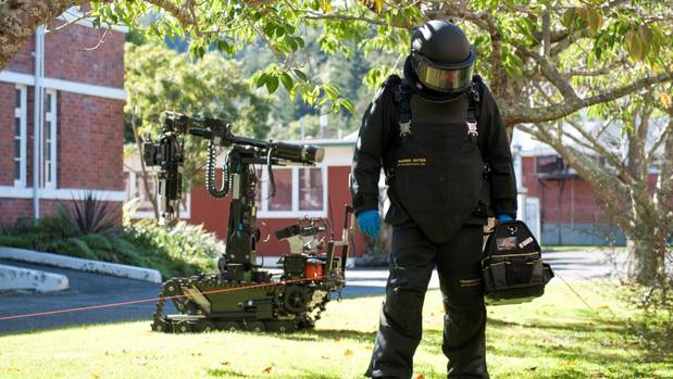
The number of callouts by the Army's crack bomb disposal team have almost tripled in the first quarter of 2018, new figures reveal, continuing an upward trend over the last three years.
The Defence Force's E Squadron (Explosive Ordnance Disposal, or EOD) were called out 330 times in the first three months to March, compared to 121 in the same period last year - an increase of 173 per cent.
About half of the incidents happened in the three main cities - Auckland, Wellington and Christchurch - according to Colonel Rob Gillard, the Special Operations Component Commander.
With the amount of time spent per task averaging three hours, the team spent about 990 hours on EOD call-outs from January to March.
Gillard said the jobs ranged from basic problems taking minutes to resolve, to "extremely complicated situations" that can require days of work.
EOD call-outs have been rising steadily in the past three years. E Squadron responded to 1151 call-outs in 2017, up 21 per cent from the 949 call-outs the previous year and 67 per cent more than the 689 recorded in 2015.
Last year, a 20-member team comprising E Squadron and police spent more than a month planning, testing and finalising a plan to safely dispose of approximately a tonne of white phosphorus, which was used previously in the manufacture of pest-control products.
Unexploded ordnance had been found in innocuous places, such as farm sheds, Gillard said.
In another recent case, new owners of a Raglan property were cleaning out their shed when they found what turned out to be a live high-explosive mortar round.
"Anything that is suspected of being an explosive should not be tampered with or moved," Gillard said.
"These things can be lethal, so ring the police immediately so the EOD team can check the item. Don't assume that it is safe and accidentally cause harm to yourselves or others."
Because of their expertise in bomb disposal, E Squadron supports New Zealand Police in securing large international events such as the British and Irish Lions rugby tour last year.
The squadron also provides training and advice to other government agencies on safety procedures, detection and mitigation measures, and threat analysis. Squadron members are trained in urban search and rescue and have assisted Civil Defence authorities in responding to natural disasters.
Bomb disposal was painstaking and fraught with danger, Gillard said.
"E Squadron's motto, 'Into Harm's Way' reflects the dangers that members face as they seek to render safe explosive ordnance, including improvised explosives and chemical, biological and radiological explosive devices," he said.
Take your Radio, Podcasts and Music with you









